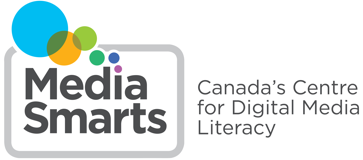Though 2SLGBTQ+ characters, situations and themes are becoming increasingly prevalent in the media, it is sometimes difficult to interpret representations.
Diversity in Media
2SLGBTQ+ people have been involved in producing their own media for as long as alternative media has existed, but with the advent of the electronic age and cheaper and more accessible electronic devices for production, there has been an explosion of 2SLGBTQ+-produced media of all kinds. The following section explores the ways that 2SLGBTQ+ people have sought to claim space for themselves within media and culture.
No longer relegated to the realms of innuendo and secrecy, today we see a wide range of gender identities and sexual orientations represented on television and in mainstream film alongside cisgender people. 2SLGBTQ+ (two-spirit, lesbian, gay, bi-sexual, trans, queer and gender and sexually diverse communities) people see their reflections on screen in a wide variety of roles. And yet, there remain many challenges.
Canada is a diverse and multicultural nation, but a major criticism that can be leveled at Canadian media’s treatment of religion is that it does not reflect this diversity. Lack of representation is, for some religions, as considerable an issue as misrepresentation is for others. Media recognition of Canada’s ‘religious mosaic’ and increased coverage of underrepresented religions is the first step towards accurate media portrayal.
Since the 1990s, media educators Anita Day and Guy Golan have identified increased tension between people of faith and media outlets [1]. Media and religion are two concepts that can be challenging to partner: religion is frequently misrepresented in media for a wide variety of reasons, whether as a result of mistakenly held beliefs or by dramatizing religion to sell newspapers or attract viewers.
Christian religions form the largest religious group in Canada today, with more than 70 per cent of the population identifying with a Christian denomination. The widespread popularity of Christianity in Canada, however, does not mean that media treatment of Christianity is always accurate or informed.
Canada is a culturally diverse country that is home to many different religions. These religions, however, are not always equally represented in Canadian media, where portrayals of religion are often stereotyped and disempowering.
Media coverage of Islam-related issues has changed dramatically since the beginning of the new millennium, both in quantity and quality. The events of September 11, 2001, thrust Islam into the global media forefront: not only did coverage of Islam drastically increase, particularly in news and entertainment media, but the way in which Islam was framed by the media changed as well.
Anti-Semitism is experiencing a modern revival in popular media, not only in Canada but worldwide. While Canada, with the fourth largest Jewish population in the world, is not among the nations where anti-Semitism has increased most dramatically, Prime Minister Stephen Harper has nonetheless acknowledged violence against Jewish people as a significant problem in this country [1]. Awareness of media stereotypes and misrepresentations faced by the Jewish community is fundamental in countering this anti-Semitist resurgence with tolerance and acceptance.
In this lesson students consider how well their favourite TV shows, movies and video games reflect the diversity of Canadian society.
